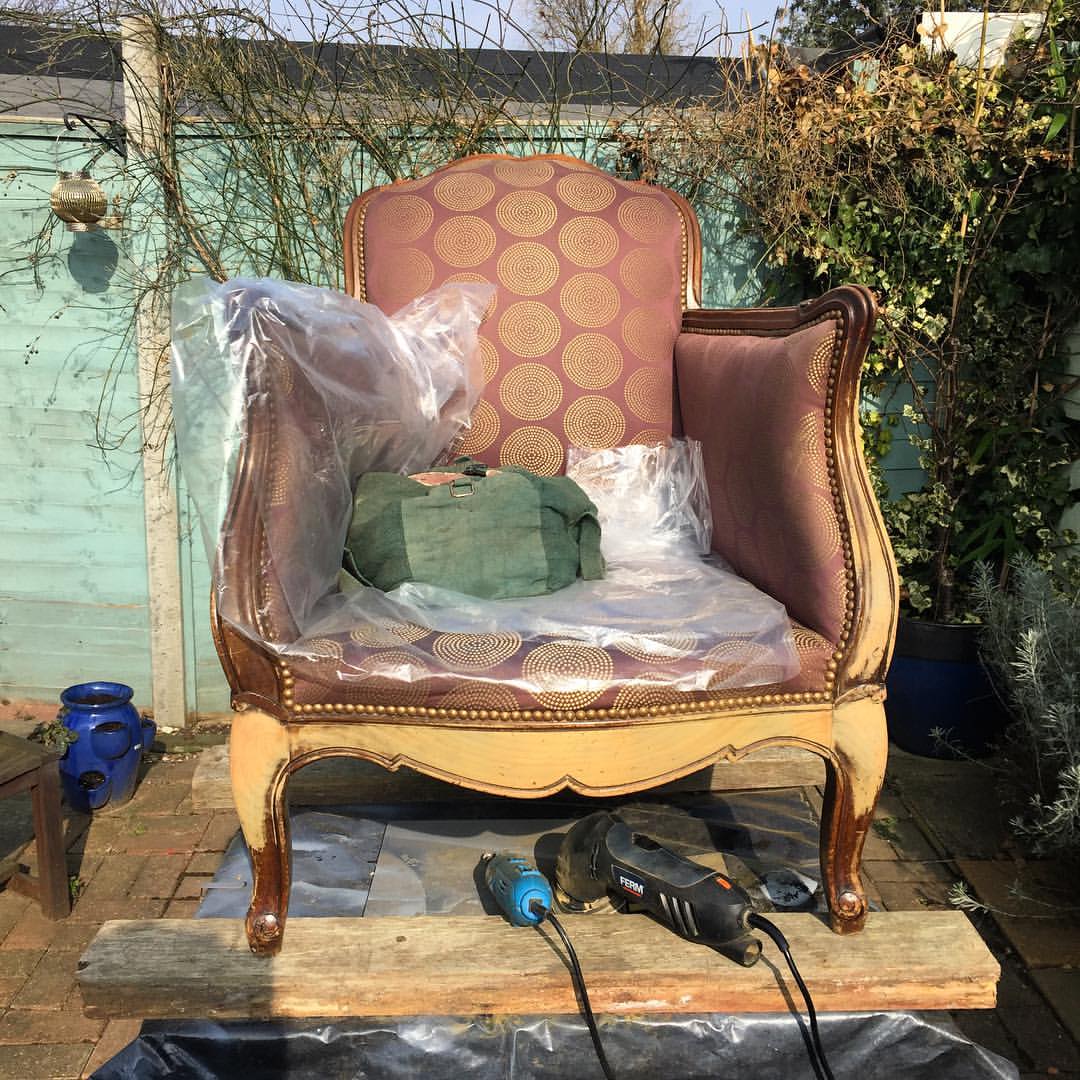I was lucky enough to stumble across these chairs at the Chiswick Car Boot sale in West London – a favourite haunt of mine on early Sunday mornings when the world and his dog are still asleep. I paid £40 each for these and had them delivered along with a pitch-pine church pew of which I was less than desirous, but have since come to view as an equally perfect find and bargain.
![[Two Louis XV style Bergère armchairs ]](http://www.jonknowles.eu/wp-content/uploads/2016/03/bergere1.jpg)
A bergère is essentially an enclosed upholstered French fauteuil with an upholstered back and armrests on upholstered frames. The seat frame is over-upholstered, but the rest of the wooden framing is exposed: it may be moulded or carved, and of beech, painted or gilded, or of fruitwood, walnut or mahogany with a waxed finish. Padded elbowrests may stand upon the armrests. A bergère is fitted with a loose, but tailored, seat cushion. It is designed for lounging in comfort, with a deeper, wider seat than that of a regular fauteuil. A bergère in the eighteenth century was essentially a meuble courant, designed to be moved about to suit convenience, rather than being ranged permanently formally along the walls as part of the decor.
The fanciful name, “shepherdess chair”, was coined in mid-eighteenth century Paris, where the model developed without a notable break from the late-seventeenth century chaise de commodité, a version of the wing chair, whose upholstered “wings” shielding the face from fireplace heat or from draughts were retained in the bergère à oreilles (“with ears”), or, fancifully, bergère confessionale, as if the occupant were hidden from view, as in a confessional. A bergère may have a flat, raked back, in which case it is à la reine, or, more usually in Louis XV furnishings, it has a coved back, en cabriolet. A bergère with a low coved back that sweeps without a break into the armrests is a marquise.
Although in pretty good shape these still had some bad dings, gouges and scuffs to the woodwork. The sill fabric was a relatively recent recovering and not at all unpleasant and the cushion were stuffed with duck down. They are very comfortable and sturdy on the whole. However, I did not care at all for the wood finish and set about removing it.

It took me two days over several weekends to remove all the varnish from every plane, nook and cranny of these two chairs. Afterwards, I simply painted on several coatings of beeswax.
![[A small brush was just the ting to coat the woodwork with beeswax]](http://www.jonknowles.eu/wp-content/uploads/2016/03/bergere3.jpg)
![[All done!]](http://www.jonknowles.eu/wp-content/uploads/2016/03/bergere4.jpg)
